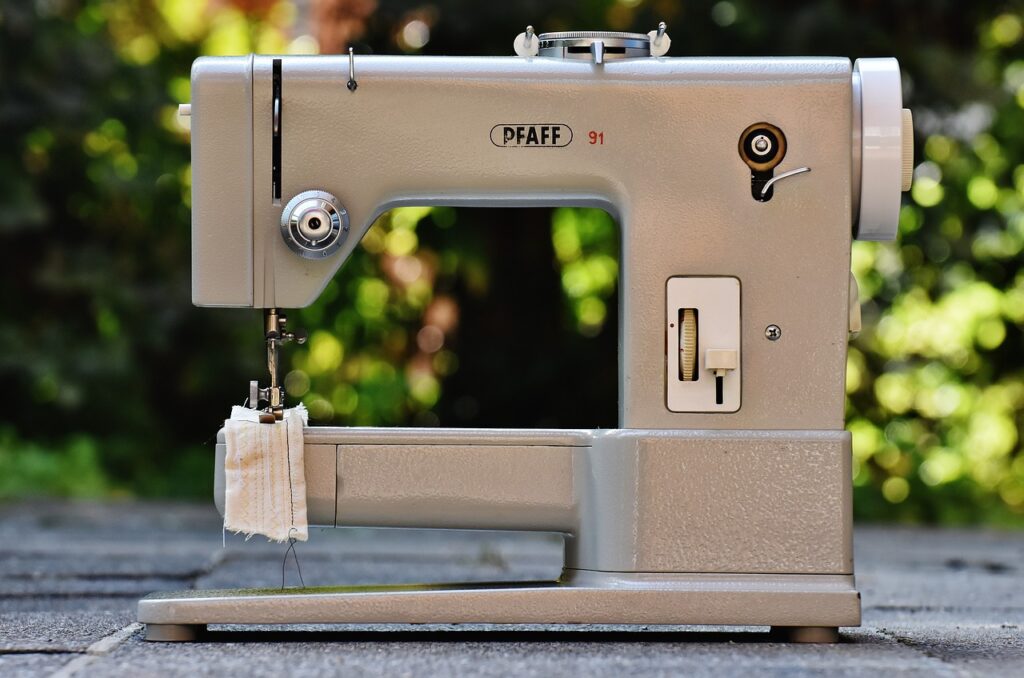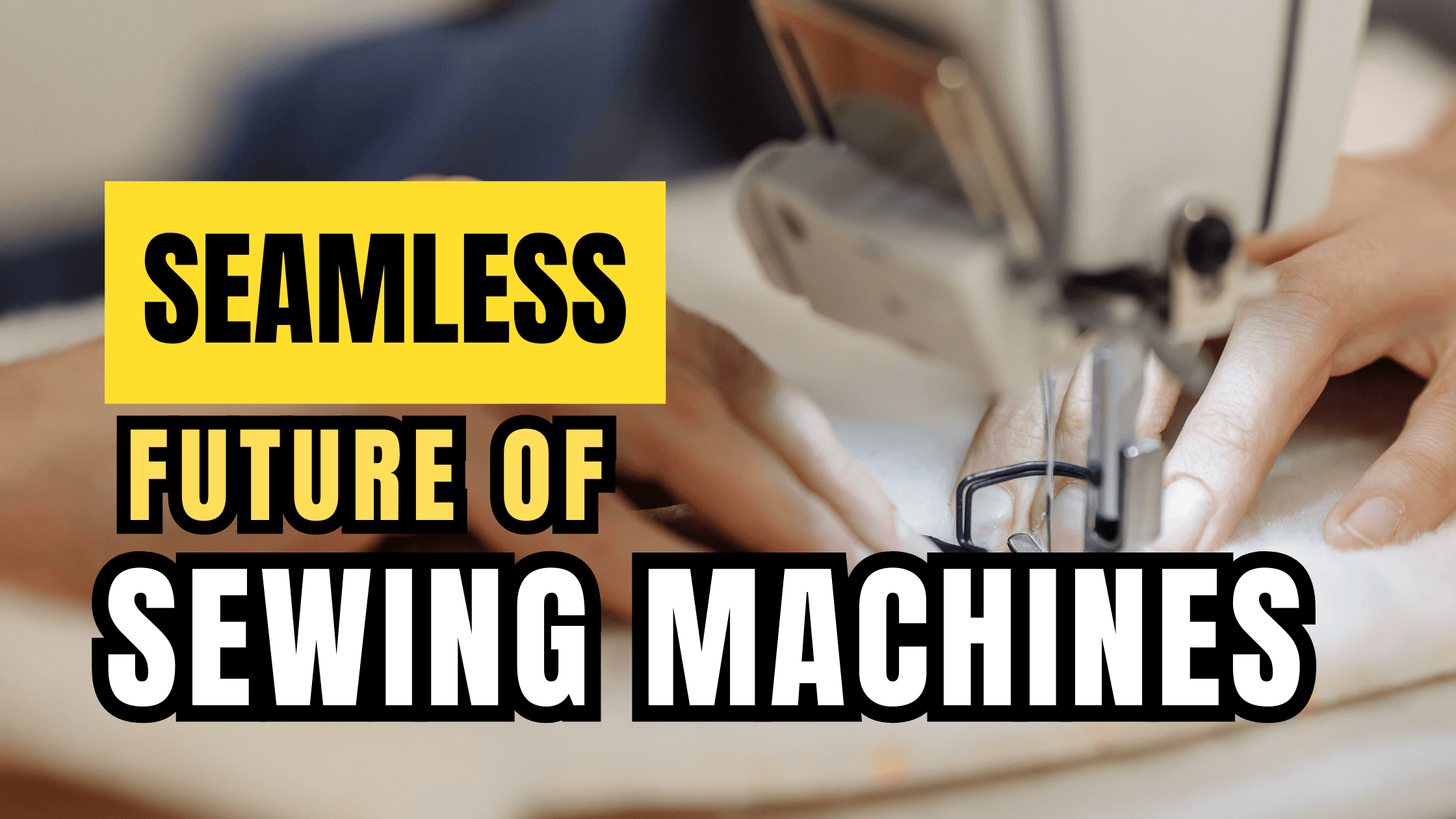Introduction
Sewing machines have been an integral part of the textile industry and home sewing for centuries, revolutionizing the way we create and construct garments, accessories, and home decor items. As technology continues to advance at an unprecedented pace, the future of sewing machines promises exciting innovations that will transform the sewing experience and open up new possibilities for both hobbyists and professionals alike. In this comprehensive blog post, we’ll delve into the potential future of sewing machines and explore the cutting-edge developments that may shape the way we sew in the years to come.
Artificial Intelligence and Machine Learning
One of the most promising advancements in the sewing machine industry is the integration of artificial intelligence (AI) and machine learning technologies. These technologies have the potential to revolutionize the way we design, create, and customize garments and other sewn products.
Imagine a sewing machine that can analyze your body measurements, personal style preferences, and fabric choices to generate custom pattern designs tailored to your individual needs. With AI-powered design assistance, the machine could suggest stylish and flattering garment patterns, recommend appropriate fabrics, and even provide step-by-step instructions for construction.
Moreover, machine learning algorithms could enable sewing machines to learn and adapt to the user’s sewing techniques, fabric handling, and stitch quality preferences. This could lead to a more personalized sewing experience, with the machine automatically adjusting settings and providing real-time feedback to ensure optimal results.
3D Printing and Additive Manufacturing
The integration of 3D printing and additive manufacturing technologies with sewing machines could revolutionize the way we approach garment construction and textile design. Imagine being able to 3D print intricate embellishments, trims, or even entire garment components directly onto the fabric using specialized printing materials.
This technology could open up new realms of creativity and customization, allowing sewers to create truly unique and one-of-a-kind pieces. Designers and hobbyists could experiment with innovative textures, shapes, and patterns that were previously challenging or impossible to achieve with traditional sewing techniques.
Additionally, 3D printing could be used to create custom presser feet, bobbins, or other sewing machine accessories tailored to specific projects or individual preferences, further enhancing the sewing experience and capabilities.
Augmented Reality and Virtual Sewing
Imagine being able to virtually try on garments or visualize how a particular fabric or pattern would look before committing to a physical project. Augmented reality (AR) and virtual sewing technologies could make this possible, transforming the way we plan and execute sewing projects.
With AR-enabled sewing machines or mobile apps, users could superimpose virtual garment designs onto their own bodies or mannequins, allowing them to experiment with different styles, colors, and fabrics in a virtual environment. This could save time, reduce fabric waste, and ensure a more accurate representation of the final product.
Virtual sewing platforms could also provide interactive tutorials and step-by-step instructions, guiding users through complex sewing techniques or pattern adjustments. These virtual assistants could offer real-time feedback, troubleshooting tips, and even suggest modifications based on the user’s skill level or project requirements.
Smart Fabric Integration
The future of sewing machines may also involve the incorporation of smart fabrics and e-textiles. These innovative materials can incorporate conductive fibers, sensors, or other electronic components, enabling the creation of garments and accessories with advanced functionalities.
Imagine sewing a jacket with built-in heating elements to keep you warm during cold weather or a sports bra that can monitor your heart rate and breathing patterns during exercise. Smart fabrics could also be used to create interactive home decor items, such as curtains that adjust their opacity based on ambient light levels or throw pillows that can play soothing music at the touch of a button.
Sewing machines designed to work with these smart fabrics could feature specialized presser feet, stitch patterns, and settings to ensure proper integration and functionality of the electronic components. This could open up exciting possibilities for wearable technology, interactive textiles, and innovative home products.

Sustainability and Eco-Friendly Innovations
As concerns about environmental sustainability and ethical production continue to grow, the sewing machine industry is likely to embrace eco-friendly innovations and sustainable practices. This could lead to the development of machines that prioritize energy efficiency, utilize recycled or biodegradable materials, and minimize waste.
For example, future sewing machines could incorporate sensors or software that optimize thread and fabric usage, reducing waste and ensuring efficient resource management. Additionally, manufacturers may explore the use of renewable energy sources or implement cradle-to-cradle design principles to create machines with a lower environmental impact.
Furthermore, the integration of digital pattern-making and virtual garment design could reduce the need for physical samples and prototypes, minimizing fabric waste and resource consumption during the design and development stages.
Connectivity and Internet of Things (IoT)
The Internet of Things (IoT) has the potential to revolutionize the way sewing machines operate and interact with other devices and systems. Imagine a sewing machine that can seamlessly connect to your smartphone, tablet, or computer, allowing you to wirelessly transfer patterns, designs, or project instructions.
Connected sewing machines could also enable remote monitoring and troubleshooting, with the ability to diagnose issues, receive software updates, or access online support resources directly from the machine. This could streamline maintenance and ensure optimal performance, even for users without advanced technical knowledge.
Additionally, IoT-enabled sewing machines could be integrated into larger home automation systems, allowing for seamless control and coordination with other smart home devices. For example, you could program your sewing machine to automatically adjust lighting or ambient temperature based on your project requirements or schedule sewing sessions around your preferred energy-efficient time slots.
Collaborative and Community-Driven Innovation
The future of sewing machines may also involve increased collaboration and community-driven innovation. With the rise of online sewing communities and social media platforms, sewers from around the world can share their ideas, techniques, and creations, fostering a culture of creativity and knowledge-sharing.
Sewing machine manufacturers could leverage this community engagement by implementing crowdsourcing initiatives, allowing users to suggest new features, customizations, or design ideas. This collaborative approach could lead to the development of sewing machines that truly cater to the needs and preferences of the sewing community.
Furthermore, online platforms could facilitate pattern and design sharing, enabling sewers to access a vast library of user-generated patterns, tutorials, and project ideas. This could foster a more inclusive and diverse sewing community, encouraging experimentation and cross-cultural inspiration.
Conclusion
As we look towards the future, it’s clear that sewing machines have the potential to evolve beyond their traditional roles and become powerful tools for creativity, innovation, and sustainable production. The integration of cutting-edge technologies, such as artificial intelligence, 3D printing, augmented reality, and smart fabrics, could unlock new possibilities and revolutionize the way we approach sewing and textile design.
However, it’s important to remember that these advancements should not overshadow the artistry and craftsmanship that lie at the heart of sewing. The future of sewing machines should strike a balance between technological innovation and the preservation of traditional sewing techniques, ensuring that both hobbyists and professionals can continue to express their creativity and passion for the craft.
As we embrace the possibilities of the future, it’s crucial for the sewing community to remain open-minded, adaptable, and actively engaged in shaping the direction of these technologies. By collaborating with manufacturers, sharing ideas, and embracing sustainable practices, we can ensure that the future of sewing machines aligns with our values, enhances our skills, and inspires us to create beautiful, functional, and environmentally-conscious products.
So, whether you’re a seasoned seamstress, a fashion designer, or a passionate hobbyist, get ready to embark on an exciting journey into the future of sewing. The possibilities are endless, and the potential for innovation and creativity is limitless. Embrace the future, but never forget the timeless art of sewing that has captivated generations before us.
